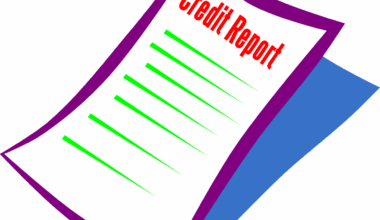Building an Emergency Fund as a Freelancer
Freelancing offers a unique financial journey that necessitates careful planning, especially regarding an emergency fund. An emergency fund acts as a safety net, ensuring you can handle unexpected expenses without derailing your financial stability. Since freelancers often have fluctuating income, creating a substantial emergency fund becomes crucial. Typically, experts recommend saving three to six months’ worth of living expenses in your fund. This amount can cover bills, groceries, and other essentials should your income suddenly drop. Importantly, establish a budget that outlines your monthly expenditures and helps you pinpoint how much you can allocate toward your emergency fund. Remember, this is not an investment; it’s about having cash readily available. Choose a reliable savings account for easy access to your funds, and avoid using this money for non-emergency situations. Regularly contribute to your fund and watch it grow, as this can provide peace of mind during challenging times. With a strong financial cushion, you can navigate the ups and downs of freelancing more confidently.
To successfully build your emergency fund as a freelancer, the first step is assessing your income fluctuations and expenses. Apply a detailed understanding of your financial landscape to determine how much you realistically need to save. Tracking your monthly expenses meticulously gives insight into your spending habits and identifies where you can cut back to enhance savings. Consider creating a separate savings account dedicated solely to your emergency fund, separating these funds from your regular operating expenses. Furthermore, automate deposits into this account to ensure consistency and avoid the temptation to dip into these savings. Start with a manageable monthly target; even small contributions can accumulate over time. For instance, saving just $100 monthly for a year can yield a solid $1,200. This practice lays a solid foundation and builds a habit of saving, essential for any freelancer. Also, during high-income months, consider allocating a larger portion of your earnings to boost your fund. Remember that every little effort counts toward achieving your financial goals!
Setting Up Your Fund
In setting up your emergency fund as a freelancer, it’s essential to define an achievable savings goal tailored to your unique financial situation. Begin by evaluating your monthly expenses and establish the total amount that will comfortably sustain you during challenging times. This might require you to calculate fixed costs such as rent, utilities, and groceries. Use this data to set a target for your emergency fund, ideally aiming for three to six months of expenses as recommended by financial advisors. For many freelancers, this goal may seem overwhelming, but breaking it into smaller milestones is effective. For instance, instead of focusing on the total sum, aim to save $1,000 initially. Celebrate these small victories, as they motivate you to continue saving. Additionally, consider creating a timeline for reaching your ultimate goal, promoting a structured approach toward saving. Use budgeting tools or apps to chart your progress, helping visualize growth over time. Keeping your emergency fund separate will ensure it remains untouched until an urgent need arises.
When you finally have your emergency fund set up, it’s crucial to maintain it diligently and monitor its status frequently. Regularly reviewing your fund helps you ensure it remains capable of covering your essential expenses during unforeseen circumstances. Set a recurring schedule, perhaps quarterly, to assess your fund’s balance and make adjustments as necessary. As your income increases or decreases, your emergency fund should evolve accordingly. If you receive a windfall, consider putting a portion into your emergency fund. You should also understand that inflation influences your fund’s value, prompting reassessment of your target amount over time. Keeping pace with rising living costs will ensure your fund remains effective. Additionally, circumstances can change; a growing family or added responsibilities may necessitate a larger safety net. Don’t hesitate to adapt your savings strategy to meet these new challenges. By treating the emergency fund as an evolving component of your overall financial plan, you maintain a proactive rather than reactive stance toward financial stability.
Utilizing Your Emergency Fund
Utilizing your emergency fund effectively requires establishing clear guidelines for when and how to access these funds. Equally important is ensuring you reserve this account for genuine emergencies, such as unexpected medical bills, significant repairs, or sudden job loss. Mismanagement of this fund can negate its purpose and hinder your financial goals. Develop criteria that define what constitutes an emergency versus a financial inconvenience. This strategy helps prevent overspending and maintains your fund’s integrity. Another useful strategy involves being methodical about withdrawing from this account; only take money when absolutely necessary, allowing the fund to work as intended. Additionally, consider restocking your emergency fund after such usage. If you withdraw funds, develop a plan to replenish what you’ve spent as soon as possible, preventing a cycle of depletion. Ultimately, maintaining a well-structured approach is crucial. As a freelancer, while enjoying fluctuations of income may feel liberating, having a structured safety net fosters financial confidence and promotes resilience when facing life’s inevitable uncertainties.
It is essential to keep your emergency fund growing even after you’ve reached your initial goal. Once you have saved between three to six months of living expenses, consider this fund a stepping stone to greater financial security. Strive to maintain or increase this fund by regularly assessing your income and expenses. Create a plan for your fund that allows for periodic contributions based on your financial situation. This proactive approach may include putting away a percentage of each project payment directly into your emergency funds. Additionally, educate yourself about other financial safety nets, including insurance options that may complement your emergency fund. For instance, health insurance can mitigate unexpected medical costs. Also, explore alternative income sources such as passive income ideas, which can buffer unforeseen financial crises. Engage with financial communities or attend workshops especially aimed at freelancers to expand your knowledge. Such interactions can inspire you to devise smarter savings strategies while building robust emergency preparedness. Always remain adaptable, adjusting your fund and savings approach to meet your evolving financial landscape.
Final Thoughts
Building and maintaining an emergency fund as a freelancer is a journey that requires perseverance, strategic planning, and commitment. The rewards, however, are well worth the effort, providing peace of mind and enhancing your ability to manage unpredictable income. By methodically assessing your financial needs and proactively saving, the financial ups and downs of freelancing become more manageable. Remember that every little contribution counts, and even during lean months, maintaining the habit of saving is critical. Never underestimate the value of having ready access to funds during emergencies: it can save you from potential financial catastrophe. Regularly reviewing and adjusting your strategies is essential to adapt to changing circumstances, ensuring your emergency fund remains robust. It acts as more than just a financial tool; it’s a crucial mindset that equips you to face uncertainties head-on. In conclusion, an emergency fund is integral to your freelance journey. Embrace the process, and with time, you will build a financial cushion that supports your dreams and aspirations!


